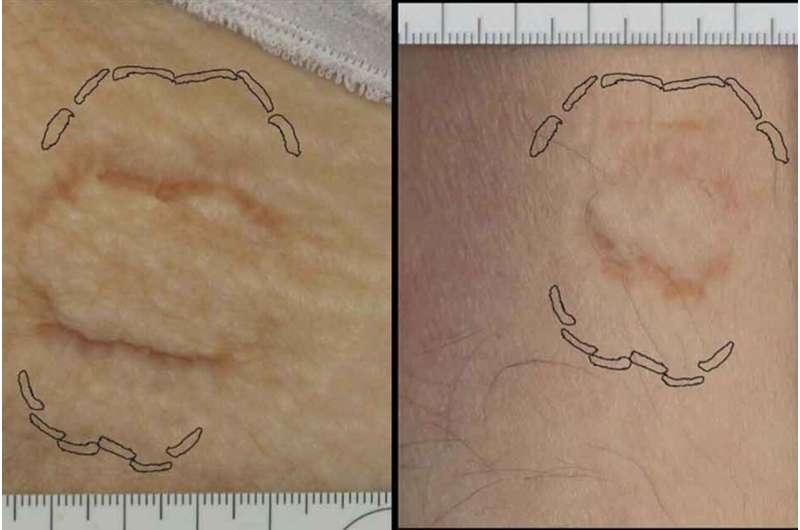This article has been reviewed according to Science X's editorial process and policies. Editors have highlighted the following attributes while ensuring the content's credibility:
fact-checked
trusted source
proofread
Forensic bitemark analysis for court trials not backed by sufficient data and 'is leading to wrongful convictions'

The commonly-used evidence in trials, bitemark analysis, is not backed up by scientific research—an analysis of current literature, and 12 new studies, shows.
Published in the Journal of the California Dental Association, the research suggests 26 people have been wrongfully convicted, and some even sentenced to death, from the use of this forensic science.
"The scientific community does not uphold the underlying premises that human teeth are unique and their unique features transfer to human skin," states lead author Mary Bush, Associate Professor at the State University of New York in Buffalo, NY.
"We find bitemark transfer to skin is not reliable and found that within a population of 1,100 people, with just 25% distortion, a significant number of the population could have created the bite.
"Our findings are a cautionary tale of how dangerous the consequences can be when it is relied on in trials."
In the team's dataset, it was noted that there was much more malalignment (and thus fewer matches) in the lower teeth versus the upper teeth. They were also able to examine distortion on actual indentations of the teeth left on skin.
The authors cite the case of Keith Allen Harward who spent 33 years behind bars for a crime he did not commit. The main evidence used to convict Harward was a bitemark on the victim's skin. A forensic dental expert explained to the jury how Harward's teeth made the bite in such great detail that his own family doubted his innocence.
"Results from DNA testing proved that Harward could not have committed the crime and the real perpetrator was identified. Harward was subsequently released from prison," Professor Bush adds.
Sadly, this is not an isolated case. The authors note that of the 26 people wrongfully convicted based on bitemark evidence some were sentenced to death. One of those was Eddie Lee Howard, a black man sentenced to death in 1994 for murdering a white woman. He was convicted on bitemark evidence and spent 26 years on death row before being exonerated.
According to the Innocence Project, which works to free people wrongly convicted, "new forensic opinion regarding bite marks and powerful alibi witnesses and DNA from the murder weapon excluded Mr. Howard, proving his innocence." He was released from Mississippi's death row in December 2020.
Bush said that the reliance on bitemark evidence was in part due to the conviction of serial killer Ted Bundy who was convicted mainly on bitemark evidence. "In his 1979 trial the distinct imprints of his teeth was key evidence and the national attention given to this trial put bitemark evidence on the map," Bush said.
The authors' findings that bitemark evidence is unreliable and should not be used in trials are in agreement with prior studies, including one by the National Academy of Sciences (NAS), that there is no scientific data to support the use of bitemark evidence. In 2009, the NAS released a 300-page report on forensic science which found "that the claim that dentists could positively identify a perpetrator by matching their dental patterns to marks on victims' bodies had never been supported by any scientific study." Yet belief in bitemark analysis persists today.
Their findings are also in agreement with a just-published review by the U.S. National Institute of Standards and Technology (NIST) which found a lack of support for three key premises of the field: "the human dentition is unique at the individual level; that the uniqueness can be accurately transferred to human skin, and identifying characteristics can be accurately captured and interpreted by analysis techniques." Their review also found a lack of consensus among practitioners on the interpretation of bitemark data as well as thoughts on how to move the field forward.
The authors hope that by presenting their findings at national meetings and publishing in peer-reviewed journals, they can raise awareness of the unreliability of bitemark evidence and the potential issues with the evidence, and the possible liabilities of testifying at trials.
More information: Mary A. Bush et al, C.E. Credit. Bitemark Analysis: The Legal vs Scientific Battle for Justice, Journal of the California Dental Association (2023). DOI: 10.1080/19424396.2023.2191391


















